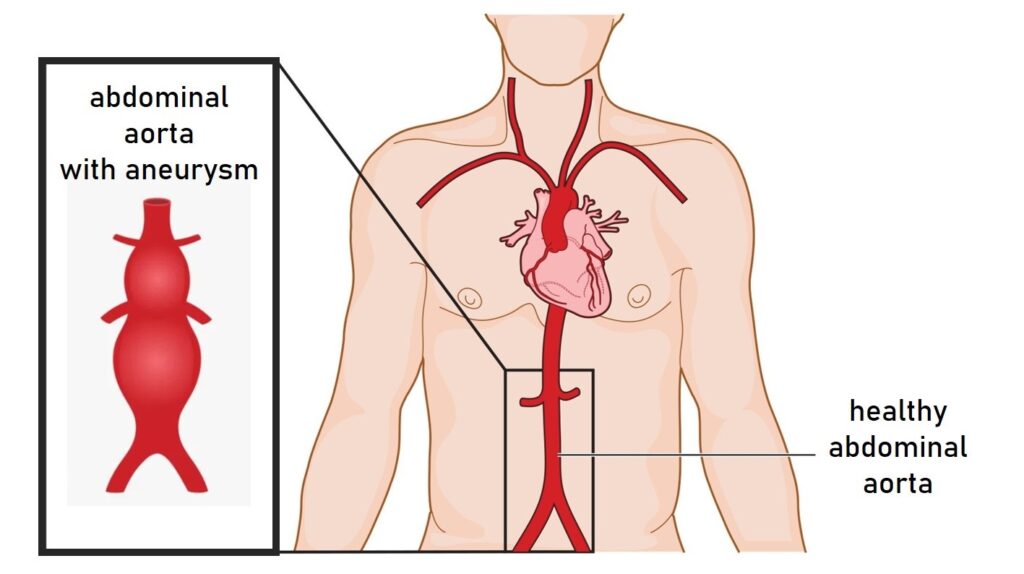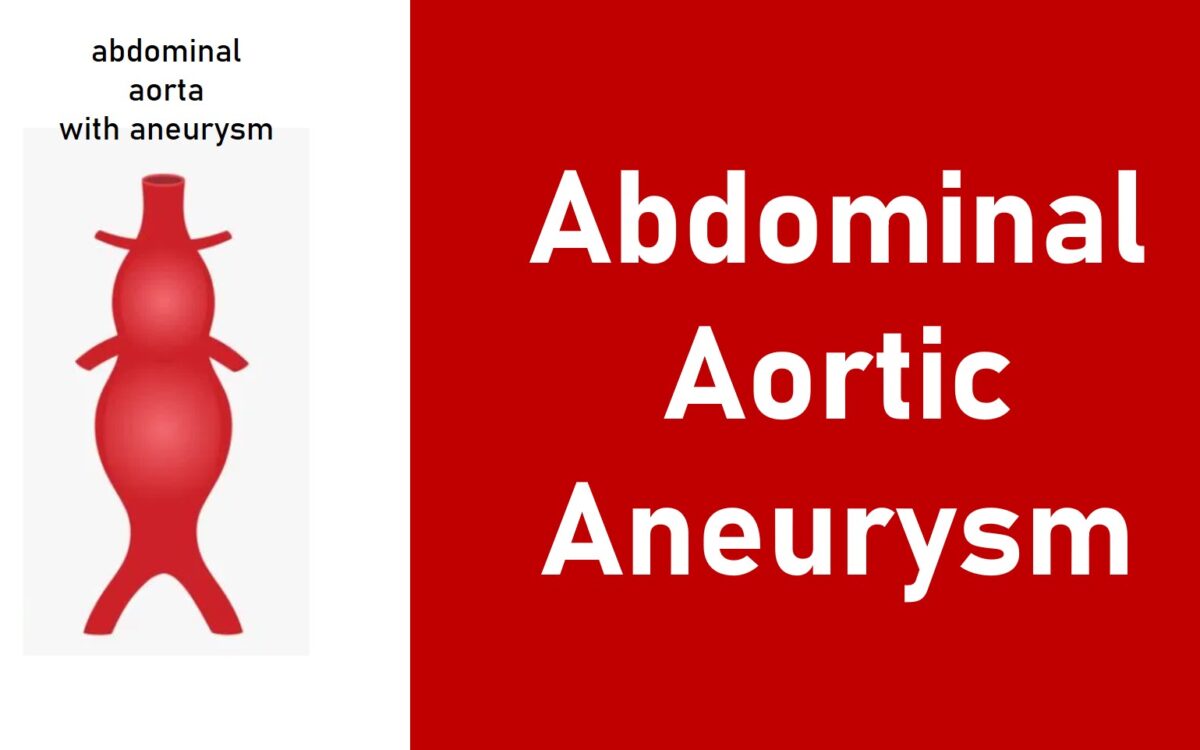Abdominal Aortic Aneurysm
An enlargement of the aorta, the main blood vessel that delivers blood to the body, at the level of the abdomen. An abdominal aortic aneurysm (AAA) can be life-threatening if it bursts.
What is an abdominal aortic aneurysm (AAA)?
The word “aneurysm” is borrowed from the Greek “aneurysma” meaning “a widening.” So basically, aortic aneurysm is a dilation or bulging of the aorta.

And it is called an Abdominal Aortic Aneurysm (AAA) when it happens in the part of the aorta that’s in your abdomen. AAA doesn’t always cause problems but a ruptured aneurysm can be life-threatening.
If you are diagnosed with AAA, your doctor will probably want to monitor it closely even if it doesn’t intervene directly. Depending on the size of the aneurysm and its growth rate, the treatment option varies from watchful waiting to an emergency surgery.
Let us learn more about this condition in detail, from the causes, symptoms, diagnosis and treatment options.
Causes of abdominal aortic aneurysm
Exact cause of AAA is unknown but certain factors do increase the risk for them. They include:
Smoking – as it directly damages the artery and making them more likely to bulge.
Hypertension (high blood pressure) – as it weakens the walls of your aorta.
Vascular inflammation (vasculitis) – serious inflammation within the aorta and other arteries can occasionally cause AAAs.
Who is at risk for an AAA
Abdominal aortic aneurysm risk factors increases, if you:
- are male
- are obese
- are over age 60
- have a family history of heart conditions
- have high cholesterol
- live a sedentary lifestyle
- smoke tobacco products
- have had trauma to your abdomen
Symptoms of an abdominal aortic aneurysm
Most aneurysm has no symptoms unless they rupture. If it ruptures you may experience following symptoms:
- Deep, constant pain in the belly area or side of the belly (abdomen)
- Pain spreading from abdomen to your pelvis, legs and buttocks area
- Sweaty skin
- Increased heart rate
- Loss of consciousness
- A pulse near the bellybutton
How it is diagnosed
Unruptured AAs are often diagnosed when your doctor is examining your abdomen for other reasons. If your doctor suspects AAA, they may also check the blood flow in your legs or use one of the following tests:
- Abdominal ultrasound
- CT scan of the abdomen
- Chest X-ray
- MRI of the abdomen
Treatment for abdominal aortic aneurysm
As said earlier, depending on the size of the aneurysm and its growth rate, the treatment option varies from watchful waiting to an emergency surgery.
Depending on the exact location of the aortic aneurysm, your doctor may perform surgery to repair or remove the damaged tissue. Surgery may be done with:
Open abdominal surgery – a more invasive surgery & has a longer recovery time. It is necessary if the aneurysm is very large.
Endovascular surgery – a less invasive surgery & it uses a graft to stabilize the weekend walls of the aorta.
SEE MORE: EVAR (abdominar EndoVascular Aneurysm/Aortic Repair) and TEVAR (Thoracic EndoVascular Aneurysm/Aortic Repair)
Ending note…
AAA can be prevented by focusing on your heart health. Watch what you eat, do regular exercise and avoid every cardiovascular disease risk factors. Your doctor may suggest to screen you for an AAA when you turn 65 if you’re at a higher risk due to smoking and other factors.


Recent Comments